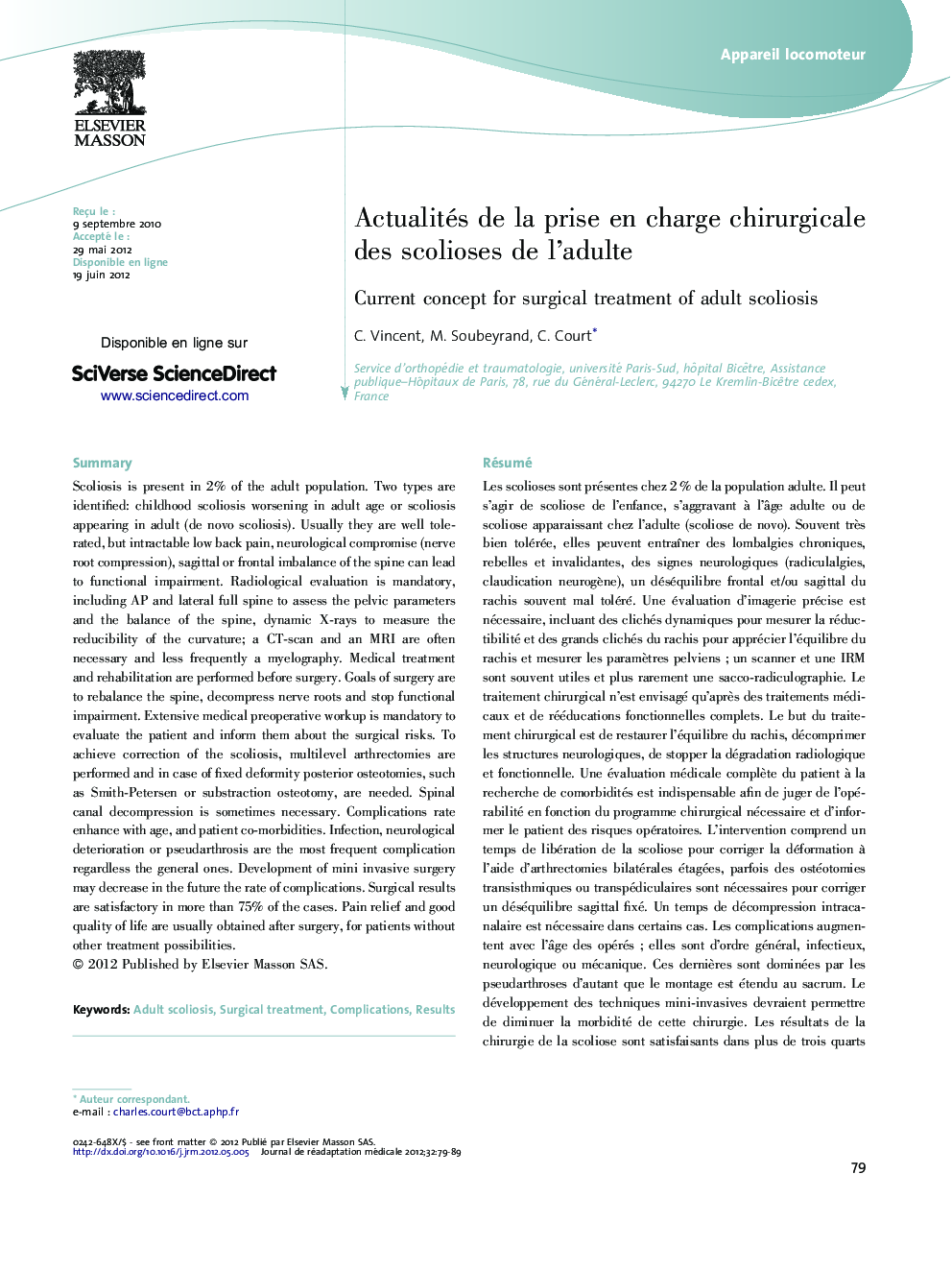| Article ID | Journal | Published Year | Pages | File Type |
|---|---|---|---|---|
| 2700486 | Journal de Réadaptation Médicale : Pratique et Formation en Médecine Physique et de Réadaptation | 2012 | 11 Pages |
Abstract
Scoliosis is present in 2% of the adult population. Two types are identified: childhood scoliosis worsening in adult age or scoliosis appearing in adult (de novo scoliosis). Usually they are well tolerated, but intractable low back pain, neurological compromise (nerve root compression), sagittal or frontal imbalance of the spine can lead to functional impairment. Radiological evaluation is mandatory, including AP and lateral full spine to assess the pelvic parameters and the balance of the spine, dynamic X-rays to measure the reducibility of the curvature; a CT-scan and an MRI are often necessary and less frequently a myelography. Medical treatment and rehabilitation are performed before surgery. Goals of surgery are to rebalance the spine, decompress nerve roots and stop functional impairment. Extensive medical preoperative workup is mandatory to evaluate the patient and inform them about the surgical risks. To achieve correction of the scoliosis, multilevel arthrectomies are performed and in case of fixed deformity posterior osteotomies, such as Smith-Petersen or substraction osteotomy, are needed. Spinal canal decompression is sometimes necessary. Complications rate enhance with age, and patient co-morbidities. Infection, neurological deterioration or pseudarthrosis are the most frequent complication regardless the general ones. Development of mini invasive surgery may decrease in the future the rate of complications. Surgical results are satisfactory in more than 75% of the cases. Pain relief and good quality of life are usually obtained after surgery, for patients without other treatment possibilities.
Related Topics
Health Sciences
Medicine and Dentistry
Orthopedics, Sports Medicine and Rehabilitation
Authors
C. Vincent, M. Soubeyrand, C. Court,
